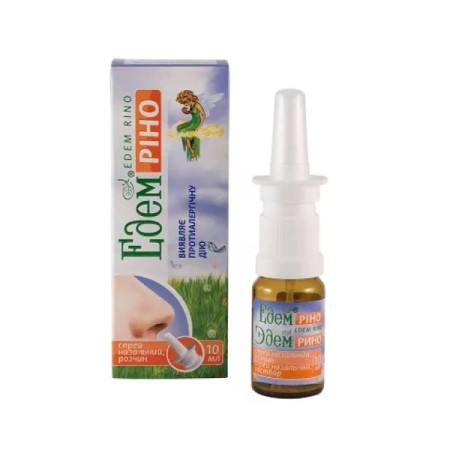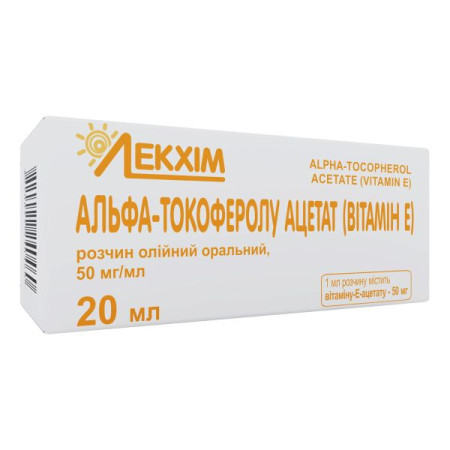Oftan Katahrom eye drops bottle with dropper 10 ml

Instructions for use Oftan Katahrom eye drops, bottle with dropper 10 ml
Composition
active ingredients: 1 ml of eye drops contains cytochrome C 0.675 mg, adenosine 2 mg, nicotinamide 20 mg;
Excipients: benzalkonium chloride; sodium succinate hexahydrate; sorbitol (E 420); sodium dihydrogen phosphate, dihydrate; sodium hydrogen phosphate, dihydrate; water for injections.
Dosage form
Eye drops.
Main physicochemical properties: transparent, red solution.
Pharmacotherapeutic group
Ophthalmic preparations. ATX code S01 XA.
Pharmacological properties
Pharmacodynamics.
Mechanism of action
Treatment of cataracts with Oftan Catachrome is based mainly on the antioxidant and nutritional effects of its active ingredients. It has been proven that Oftan Catachrome has a beneficial effect on non-specific, non-infectious inflammatory processes of the anterior segment of the eye.
Cytochrome C is a high molecular weight iron-porphyrin compound with a complex protein structure similar to hemoglobin. It plays an important role in the biochemical redox processes of almost all aerobic organisms.
Pharmacodynamic effect
Cytochrome C in Oftan Catachrome eye drops has the potential to neutralize oxygen radicals directly in the cornea and is cleaved to heme peptide in the intraocular fluid and the lens epithelium. Cytochrome C can also indirectly act as an antioxidant by inhibiting cytochrome oxidase in the lens epithelium, and thus prevent the formation of radical-induced cataracts.
Adenosine plays multiple roles in eye drops. It promotes vasodilation and increases blood perfusion in the eye. It nourishes the lens and cornea and at the same time promotes the outflow of toxic catabolites, improving the exchange of intraocular fluid. Adenosine stops inflammation of the conjunctiva, cornea and other anterior parts of the eye. It is a physiologically active substance and an endogenous molecule that stops inflammation by stimulating A2 receptors on the surface of the cell membrane. In addition, adenosine reduces the release of inflammatory mediators such as calcitonin gene-related peptide.
Adenosine serves as a nutrient and a key element in DNA repair and energy metabolism. It plays an indirect role in the reduction processes of glutathione in the lens of the eye, as it is a structural element of the enzyme glutathione reductase and NADP (nicotinamide adenine dinucleotide phosphate).
Nicotinamide is a structural element of the vital coenzymes NAD (nicotinamide adenine dinucleotide) and NADP (nicotinamide adenine dinucleotide phosphate). The addition of nicotinamide to the composition of the drug Oftan Catachrome is based on the assumption that the development of cataracts can be avoided/prevented by increasing the ability of the epithelial cells of the lens of the eye to repair themselves with metabolic nutrients necessary for DNA repair and the activity of enzymes of the glutathione system.
Oftan Catachrome is intended to arrest the development of cataracts. Due to its low toxicity, it can also be used prophylactically. Treatment with Oftan Catachrome usually needs to be long-term to achieve a significant objective benefit in arresting lens opacification. In a placebo-controlled clinical trial, the drug stopped lens opacification in senile cataracts after use for at least 6–12 months. However, other studies and empirical clinical experience have demonstrated efficacy for a period of time shorter than 6 months.
The effect of the drug Oftan Katahrom is not limited to the lens of the eye, the drug also has anti-inflammatory, antioxidant, antibacterial, nutritional, disinfectant and moisturizing effects on the surface of the eye. It has been proven that it has a beneficial effect on non-specific, non-infectious inflammatory processes of the anterior segment of the eye.
Clinical efficacy and safety
An open study of patients with keratoconjunctivitis confirms the following point of view. 379 patients with inflammatory, traumatic and metabolic diseases of the cornea and conjunctiva, such as postherpetic keratopathy, corneal ulceration and dystrophy, dry eye syndrome, chronic keratoconjunctivitis and chronic blepharoconjunctivitis, had a significantly shorter recovery time when treated with traditional steroid drugs in combination with Oftan Catachrome eye drops than when treated with steroid drugs alone.
Pharmacokinetics.
The active components of Oftan Catachrome eye drops are endogenous substances. Cytochrome C consists of heme and one peptide chain (apocytochrome C), and adenosine consists of purine (adenine) and sugar (D-ribose). The third active ingredient is nicotinamide.
Absorption
Cytochrome C itself does not penetrate the cornea in large quantities and penetrates only after cleavage of the peptide chain, while heme nonapeptide does. Adenosine and nicotinamide penetrate the cornea easily and quickly.
The absolute systemic bioavailability of cytochrome C after topical ocular administration is minimal. After penetration into the cornea, heme is distributed to virtually every tissue of the eye. Heme itself is lipophilic and quite hydrophobic, but with peptide or globin (hemoglobin) it becomes hydrophilic. After topical ophthalmic administration, adenosine and nicotinamide are distributed to all tissues of the eye.
Biotransformation
Cytochrome C is completely metabolized in the body. Apocytochrome C is degraded by amino acid metabolism, and heme is catabolized to bilirubin, which is excreted from the body with bile. Adenosine is metabolized in almost all tissues of the body. The metabolites are inosine, xanthine, and urates, which are excreted from the body by the kidneys. Ribose is metabolized via transketolase to glyceraldehyde-3-phosphate and then to pyruvate and is finally oxidized in the Krebs cycle (citric acid cycle). Nicotinamide is partially metabolized in the body by nicotinamidase to nicotinic acid (niacin). Both of these components are converted to N-methylnicotinamide, which is further degraded in the liver.
Excretion from the body
The heme of cytochrome C is excreted in the bile, and the metabolites of adenosine are excreted in the urine, as are unchanged nicotinamide and its metabolites. The plasma half-life of adenosine is less than 1 minute, while that of nicotinic acid is highly variable, typically several hours.
Indication
Cataract.
Contraindication
Hypersensitivity to the active substances or to any of the excipients.
Interaction with other drugs and other types of interactions.
No drug interaction studies have been conducted. No significant interactions with other drugs are known when used topically in the eyes at the same time.
Application features
Oftan Catachrome eye drops are intended for external use only; they cannot be used for injection or oral administration.
Benzalkonium chloride
Benzalkonium chloride may cause eye irritation, dry eye symptoms and may affect the tear film and corneal surface. It should be used with caution in patients with dry eye and in patients who may have corneal damage. Patients should be monitored during prolonged use.
Using contact lenses
Oftan Catachrome eye drops contain the preservative benzalkonium chloride.
Contact lenses should be removed before using this medicine and reinserted 15 minutes after instillation. Benzalkonium chloride is known to discolour soft contact lenses.
Any remaining solution should be discarded 4 weeks after first opening the vial.
To avoid contaminating the dropper and solution, do not touch the eyelashes, surrounding areas, or other areas of the eye surface with the tip of the dropper.
Keep the bottle tightly closed when the drops are not in use.
Eye drops contain phosphates: sodium hydrogen phosphate, dihydrate (4.415 mg/ml) and sodium dihydrogen phosphate, dihydrate (2.847 mg/ml).
When using the bottle for the first time:
When using the bottle for the first time, screw the cap on by turning the lid clockwise until it fits snugly around the top of the bottle so that the peak inside the cap creates a hole in the bottle.
The bottle is ready for use after unscrewing the cap by turning it counterclockwise.
There are no special requirements for disposal.
Any unused medicinal product or waste material should be disposed of in accordance with local requirements.
Use during pregnancy or breastfeeding
The effect of Oftan Catachrome eye drops during pregnancy or breastfeeding has not been studied. Therefore, it is not recommended to use the drug during these periods.
Ability to influence reaction speed when driving vehicles or other mechanisms
Oftan Catachrome has no effect on the ability to drive or use machines. As with any ophthalmic drug, if temporary blurred vision occurs after instillation, the patient should wait until clear vision appears before driving or operating machinery.
Method of administration and doses
Doses:
Instill 1–2 drops topically into the eye(s) 3 times a day.
Method of application:
ophthalmic use.
In case of simultaneous use of other ophthalmic drugs, an interval of 5–15 minutes must be observed between instillation of each drug.
Children
There are no relevant data on the use of Oftan Catachrome in pediatric patients.
Instructions for use
Open the vial. Do not touch any objects with the tip of the vial to avoid contaminating the solution.
| 2. Tilt your head back, holding the bottle above your eye. |
| 3. Pull your lower eyelid down and look up, then press the bottle lightly to release one drop. |
| 4. Close your eye and press your finger against the inner corner of your eye for about one minute. This will help keep the drop in your eye so it doesn’t get into your tear duct. Close the bottle cap. |
Overdose
Oftan Catachrome is safe for ophthalmic use. Cases of accidental or intentional oral overdose are unknown. In case of overdose of Oftan Catachrome eye drops, symptomatic therapy should be carried out.
Adverse reactions
The following adverse reactions are listed by frequency: very common (≥ 1/10); common (≥ 1/100, < 1/10); uncommon (≥ 1/1000, < 1/100); rare (≥ 1/10000, < 1/1000); very rare (< 1/10000) and frequency unknown (cannot be estimated from the available data).
These undesirable effects have been reported during clinical trials and post-marketing surveillance of Oftan Catachrome eye drops. Due to the low doses used in ophthalmic use, such side effects are not expected.
Within each frequency grouping, adverse reactions are presented in order of decreasing seriousness.
Ophthalmological
Common: short-term eye pain and eye irritation.
Rare: hypersensitivity reactions, including skin rashes, itching, flushing and swelling of the facial skin; allergic conjunctivitis, including eye pain, flushing and itching of the eyes; contact dermatitis.
Neophthalmological
Very rare: adenosine: very short-term nausea, dizziness, hypotension and shortness of breath.
Nicotinic acid: hot flashes, feeling hot, fainting, and headache.
Not known: tearing, short-term eye irritation associated with benzalkonium chloride (preservative).
Cases of corneal deposits in some patients with severely damaged corneas have been reported very rarely due to the phosphate content of eye drops.
Reporting of suspected adverse reactions
Reporting suspected adverse reactions after the registration of a medicinal product is important. This allows for continuous monitoring of the benefit-risk balance associated with the use of the medicinal product.
Physicians are asked to report any suspected adverse reactions.
Expiration date
3 years.
Use within 28 days after opening the bottle.
Storage conditions
Store at a temperature of 2 to 8 °C.
Keep out of reach of children.
Packaging
10 ml in a bottle with a dropper. 1 bottle in a cardboard box.
Vacation category
According to the recipe.
Producer
Santen Oy.
Location of the manufacturer and its business address
Kelloportinkatu 1, Tampere, 33100, Finland.
There are no reviews for this product.
There are no reviews for this product, be the first to leave your review.
No questions about this product, be the first and ask your question.












